new posts in all blogs
Viewing: Blog Posts Tagged with: Photography, Most Recent at Top [Help]
Results 1 - 25 of 516
How to use this Page
You are viewing the most recent posts tagged with the words: Photography in the JacketFlap blog reader. What is a tag? Think of a tag as a keyword or category label. Tags can both help you find posts on JacketFlap.com as well as provide an easy way for you to "remember" and classify posts for later recall. Try adding a tag yourself by clicking "Add a tag" below a post's header. Scroll down through the list of Recent Posts in the left column and click on a post title that sounds interesting. You can view all posts from a specific blog by clicking the Blog name in the right column, or you can click a 'More Posts from this Blog' link in any individual post.
 When I was in college I temporarily rejected my natural inclinations to be a librarian (an occupation I dismissed as boring and nightmarishly appealing) and decided I would become a photographer. So got a B.A. with a concentration in Fine Arts – Photography. And what I learned from my stint as an architectural/portrait/sports photographer was simple: I’m awful that job. Shutter speeds are not my friends and f-stops cause me to break out in hives. So I caved and became a librarian after all, but I never stopped yearning for photography. Maybe that’s why I’m such an advocate for it in children’s books. In 2014 at NYPL I held a Children’s Literary Salon with panelists Nina Crews, Joanne Dugan, Charles R. Smith, and Susan Kuklin to discuss the state of photography in books for kids. It was brilliant, though I was left wondering why, in an age where creating photographic books for kids is cheaper than ever, the pickings are so very slim.
When I was in college I temporarily rejected my natural inclinations to be a librarian (an occupation I dismissed as boring and nightmarishly appealing) and decided I would become a photographer. So got a B.A. with a concentration in Fine Arts – Photography. And what I learned from my stint as an architectural/portrait/sports photographer was simple: I’m awful that job. Shutter speeds are not my friends and f-stops cause me to break out in hives. So I caved and became a librarian after all, but I never stopped yearning for photography. Maybe that’s why I’m such an advocate for it in children’s books. In 2014 at NYPL I held a Children’s Literary Salon with panelists Nina Crews, Joanne Dugan, Charles R. Smith, and Susan Kuklin to discuss the state of photography in books for kids. It was brilliant, though I was left wondering why, in an age where creating photographic books for kids is cheaper than ever, the pickings are so very slim.
Here then, are the few, the brave, the books that aren’t afraid of f-stops and shutter speeds the way I once was. Here is 2016 photography at its finest. I’ve include interior shots where available to give you a taste of what I mean:
2016 Photography Books for Kids
Best in Snow by April Pulley Sayre
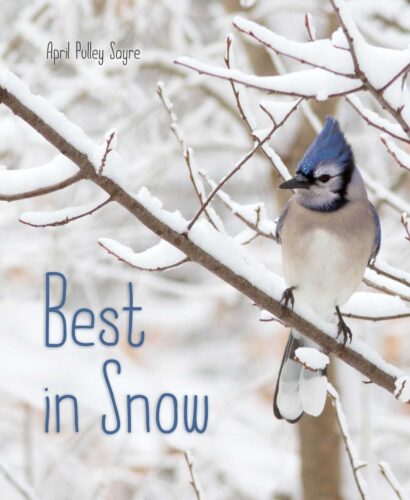
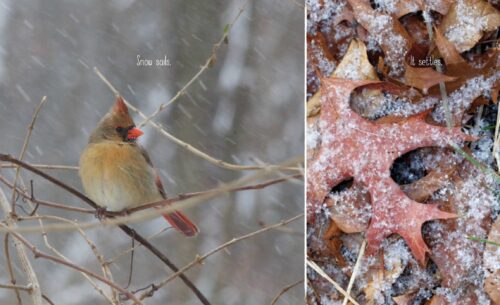
I am so happy that by putting this list in alphabetical order by title April Pulley Sayre is at the top. Her photography over the years has been so luscious and wonderful that were there an award for Best Photography in a Picture Book, she’d be the ringer who gets it over and over and over again. Best in Snow lives up to its name and is a wonderful title to read with kids right now as the temperatures plummet.
Crow Smarts: Inside the Brain of the World’s Brightest Bird by Pamela S. Turner, photos by Andy Comins, ill. Guido de Flilippo

 Initially when I thought of this list I figured I’d only include picture books that incorporate photography. That idea sort of fell by the wayside when I realized that there just weren’t enough of them published in a given year. As a result, I’m including those nonfiction titles where a single credited photographer (in this case the incredibly patient and talented Andy Comings) has done the work. Crow Smarts also happened to be one of my favorite nonfiction titles in 2016. It’s not a picture book but rather a long and remarkable look at what may well be the most fascinating, intelligent birds on the planet.
Initially when I thought of this list I figured I’d only include picture books that incorporate photography. That idea sort of fell by the wayside when I realized that there just weren’t enough of them published in a given year. As a result, I’m including those nonfiction titles where a single credited photographer (in this case the incredibly patient and talented Andy Comings) has done the work. Crow Smarts also happened to be one of my favorite nonfiction titles in 2016. It’s not a picture book but rather a long and remarkable look at what may well be the most fascinating, intelligent birds on the planet.
I Am a Baby by Kathryn Madeline Allen, photos by Rebecca Gizicki


My 2-year-old is currently going through that phase where he realizes that babies are smaller than he is. Consequently, he finds them absolutely fascinating. His favorite movie right now? The documentary Babies. And his favorite baby-related book? I Am a Baby by Kathryn Madeline Allen. But it’s Rebecca Gizicki that we should be celebrating today. If you thought that crow book had some difficult shots in it, just try taking pictures of hoards of babies. In both cases the subject matter is pretty cute.
I Wonder: Celebrating Daddies Doin’ Work by Doyin Richards


A friend of mine lives in Portland, OR and a couple years ago her husband founded Seahorses PDX, a store dedicated entirely to dads and their kids. They asked me for book recommendations when they first opened, and I complied. Had this book been around then, you can bet I would have mentioned it (and I’ll certainly pass it on to them now). Like I Am a Baby it shows a lot of random babies being cute, but am I supposed to object to that? Bring it on!
Jazz Day: The Making of a Famous Photograph by Roxane Orgill, ill. Francis Vallejo

If it’s any comfort, I know that I’m pushing my luck here. But the entire book is about a photograph! Granted there’s only one real photo in the whole books but look how well artist Vallejo incorporates the real kids into the fictionalized ones:

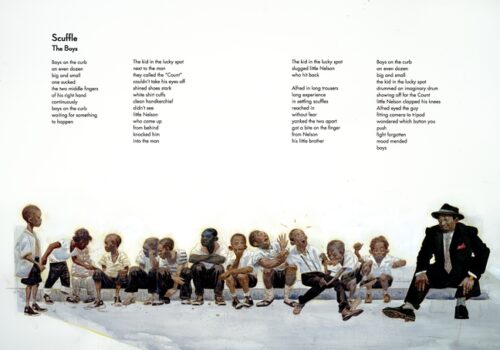
So it stays.
Natumi Takes the Lead: The True Story of an Orphan Elephant Who Finds Family by Gerry Ellis with Amy Novesky


Inviting National Geographic to this party is akin to having a hustler at your weekly poker game. I acknowledge freely that I’m also breaking my rule about not having multiple photographers. My weak excuse is that they were all working for the same company (Nat Geo) and therefore we can count them as a single unit. Still, if I’m going to be honest, the whole reason the book is included is because it features a baby elephant that comes into her own. Would you kick out a baby elephant? Would you? Just look at that punim.
Pink Is for Blobfish: Discovering the World’s Perfectly Pink Animals by Jess Keating, ill. David DeGrand
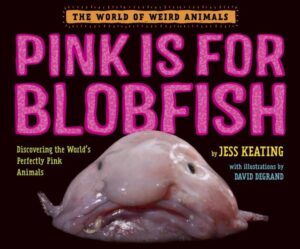

And speaking of punims . . . also a book where the photographers were ah-plenty. But it’s all about little known pink creatures and so beautiful. You should take a gander at it, when you get a chance.
The Secret Subway by Shana Corey, ill. Red Nose Studio
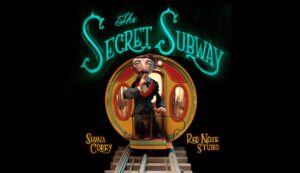
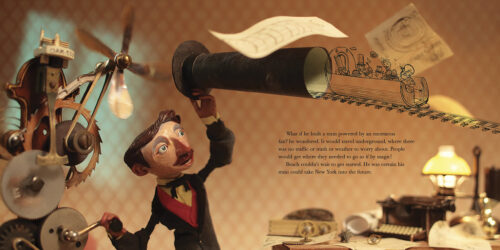

Creating the models for this nonfiction picture book was only half the battle for Red Nose Studio. Next came the difficulty in lighting the scenes. Look at the two examples I’ve placed above. Can you full appreciate the artistry at work here? The composition is rivaled only by the sheer creativity.
Whose Eye Am I? by Shelley Rotner
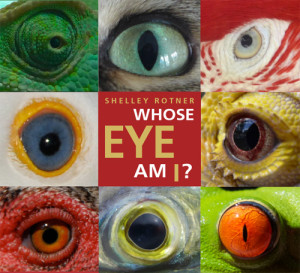
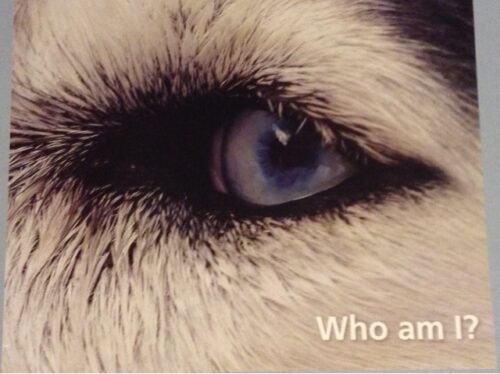
Ms. Rotner did a similar title a number of years ago that was all about feet, I believe, and it never got the attention it deserved. Here’s hoping this eye book will.
Will You Be My Friend? by Susan Lurie, ill. Murray Head
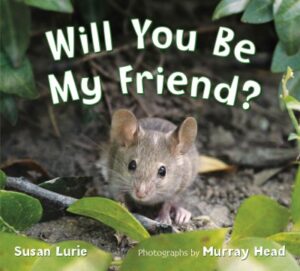
And I’ll end today with a rarity. There once was a time when fictionalized picture book texts were frequently paired with photographic images. Sometimes this yielded transcendent books and sometimes it got a touch on the creepy side (paging, The Lonely Doll). Even the first book on today’s list doesn’t really go all out fictional. Lurie and Head are different. They did this utterly charming book a couple years ago called Swim, Duck, Swim! and now they’re following it up with a classic search for friendship. Should you buy it? Here’s an interior spread to help sway you:
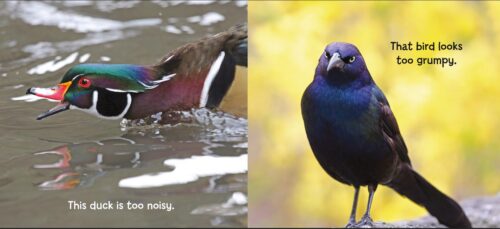
Interested in the other lists of the month? Here’s the schedule so that you can keep checking back:
December 1 – Board Books
December 2 – Board Book Adaptations
December 3 – Nursery Rhymes
December 4 – Picture Book Readalouds
December 5 – Rhyming Picture Books
December 6 – Alphabet Books
December 7 – Funny Picture Books
December 8 – Calde-Nots
December 9 – Picture Book Reprints
December 10 – Math Picture Books
December 11 – Bilingual Books
December 12 – International Imports
December 13 – Books with a Message
December 14 – Fabulous Photography
December 15 – Fairy Tales / Folktales
December 16 – Oddest Books of the Year
December 17 – Older Picture Books
December 18 – Easy Books
December 19 – Early Chapter Books
December 20 – Graphic Novels
December 21 – Poetry
December 22 – Fictionalized Nonfiction
December 23 – American History
December 24 – Science & Nature Books
December 25 – Transcendent Holiday Titles
December 26 – Unique Biographies
December 27 – Nonfiction Picture Books
December 28 – Nonfiction Chapter Books
December 29 – Novel Reprints
December 30 – Novels
December 31 – Picture Books

The Singing Bones. Shaun Tan. 2016. 208 pages. [Source: Library]
First sentence: There are stories, honed by the retelling, simplified by the people who recorded them and transmitted them, old stories, with the edges rubbed off them, like the pebbles on a beach, each story the perfect size and heft to send skimming over the water, or to use to strike an enemy. Folktalkes are like jokes: If they had a beginning, it is lost to us.
Premise/plot: The Singing Bones is a collection of photographs and one-page 'retellings' of Grimm fairy tales or folk tales. The photographs are of sculptures made by Shaun Tan. Gaiman, who wrote the introduction, probably says it better than I ever could: "They [the sculptures] feel primal, as if they were made in a long-ago age of the world, when the stories were first being shaped, and that perhaps the sculptures came first."
There are dozens of photographs. They do take center stage in this book. The words being almost like a brief but necessary interruption. The text does not summarize the fairy tale. The text is definitely on the literary side. The reader has to work to make connections and "see" the bigger story that both photograph and text tell.
My thoughts: I didn't actually love this one personally. But. Just because I don't love, love, love something doesn't mean that I don't recognize ART when I see it. This is a weighty 'literary' book that is definitely interesting and quirky. I think those who love it will really LOVE it.
This quote by Neil Gaiman was fabulous:
People need stories. It's one of the things that make us who we are. We crave stories, because they make us more than ourselves, they give us escape and they give us knowledge. They entertain
us and they change us, as they have changed and entertained us for thousands of years.
© 2016 Becky Laney of
Becky's Book Reviews

By: Hannah Paget,
on 3/1/2016
Blog:
OUPblog
(
Login to Add to MyJacketFlap)
JacketFlap tags:
women in science,
michael faraday,
*Featured,
Physics & Chemistry,
Émilie du Châtelet,
Science & Medicine,
William Herschel,
Mary Somerville,
Robyn Arianrhod,
Seduced by Logic,
commemoration,
Mary Somerville and the Newtonian Revolution,
Mechanism of the Heavens,
RBS 10 pound note,
Royal Bank of Scotland,
theory of light,
Books,
History,
photography,
feminism,
money,
Legacy,
Mathematics,
British,
electricity,
female scientists,
Add a tag
From 2017, ten-pound notes issued by the Royal Bank of Scotland will feature a new face: that of the great nineteenth-century science communicator Mary Somerville. Her book on mathematical astronomy, Mechanism of the Heavens -- published in 1831, when she was fifty years old -- was used as an advanced textbook at Cambridge for a hundred years. This is a phenomenal achievement for a woman who taught herself science and mathematics.
The post Mary Somerville: the new face on Royal Bank of Scotland’s ten-pound note is worthy of international recognition appeared first on OUPblog.
Police mugshots have their own stylistic conventions that have developed over time. In 1905, some English police had the accused hold a chalkboard with their name and alleged crime—in this case, larceny.
In Australia in the 1920s, the accused was shown in close-up and in a standing pose, with the name written on the negative.
The Australian mugshots seemed more improvisational and less clinical than modern ones. But there's still that sense of defiance, as if to say, "You can catch me, copper, but you can't break me."
Some of the subjects look well dressed, and invite curiosity about their story.
These last four images are from a collection of 1920s mugshots collected in Sydney, Australia by novelist Peter Doyle for a book called
Crooks Like Us
.
---

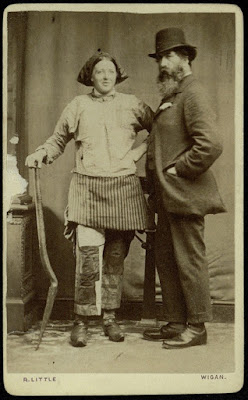 |
Arthur Munby with Ellen Grounds,
a "pit brow wench," 1873 |
The first thing that comes to my mind when one thinks of jobs for Victorian lower class women are domestic jobs: kitchen and washing and that sort of thing.
But Victorian women also worked in rough, dirty jobs outside the home that one would think were suitable only for men. For example, the so-called "pit brow wenches" worked at the top of coal mines to shovel the chunks of coal into waiting railroad trucks.
They wore trousers and would come home black with dirt. Other women worked inside the mines, crawling on their hands and knees, pulling mine carts with chains attached around their waists.
The work of these women might have been largely forgotten were it not for
Arthur Munby, who had a fascination and an admiration for them. He convinced many of them to pose in photographic studios, as cameras in the 1860s couldn't function in the low-light conditions that prevailed at the worksites.
He also carefully documented them in interviews and notes, leaving behind a rich sociological record.
Munby even courted and eventually married a servant woman named
Hannah Cullwick, but he had to keep the relationship secret from his family for 20 years.
The reality of life for Victorians is evident from the dirty and ragged appearance in Munby's photos. Here are some "tip girls" from Wales. Munby insisted on photographing these women "in their dirt."
Paintings of Victorian working women were rare, and tended to show a sanitized view with soft hands, a smile, and a bright white apron. In 1859 Munby had lunch with John Ruskin, telling him about his project, and suggesting that "some one ought to paint peasant girls and servant maids as they are —coarse and hearty and homely — and so shame the false whitehanded wenches of modern art." But nothing came of it.
Some of the strangest trades for women could be found in the dark alleys of London that upper-class people rarely saw up close, much less photographed. James Greenwood reported in his book
Low-Life Deeps:
"Strange trades are carried on in these slums, and occupations are followed which in civilised parts are never dreamt of:, except it be in exceptionally bad dreams.... There is an awful little alley, for instance, in the neighbourhood of Hales's tallow factory, consisting of about twenty houses, inhabited almost entirely by folk who collect the ordure of dogs, which is used for tanning purposes."
"There are but few left there now, I am informed, but not very long since the residents of this delectable spot consisted chiefly of "cat-flayers" - whose sole means of living was to go out at night with their sacks and sticks, hunting for cats to be slaughtered for the sake of their skins...It is unfortunate... that to be saleable the hide must be taken from the body of the animal while it is in existence, and still more so that the villainous cat-flayers are not deterred by this difficulty. I was further informed that the neighbourhood used to be scandalised by the presence of the flayed carcasses of poor grimalkins lying about, but that now that indecency is avoided by an economical arrangement on the part of the flayer. He now puts his dead cats in the copper, and makes further capital of their bones and fat."
Above quote from
Victorian London.Book:
Victorian working women: Portraits from life
by Michael Hiley
Arthur Munby and
Hannah Cullwick on Wikipedia

REST and PLAY, by Elizabeth Verdick and Marjorie Lisovskis are two delightful books for newborns through two years old.

Title: Crop
Cost: Free, with $ 1 in-app purchase to remove ads and maintain aspect ratio
Platform: iOS
Sometimes an app is so simple, but works so well, it's hard to imagine how you would get along without it. For me, one of those is Crop by Green Mango Systems.

Whether it's focusing on the content of a screen-captured Instagram post or creating a quick thumbnail for an avatar, there are many occasions when you'll want to remove the bulk of an image or rotate it on the fly. You simply select the image, use the eight points of the image canvas to determine the size you want, and you can keep finessing things until you hit "Save." And unlike the crop option within the iOS photo roll, Crop saves your creation as a new file, so you don't loose the original.
In a digital photography workshop at our state edtech conference this summer, the presenter, Leslie Fisher, emphasized taking pictures from where you stood and cropping them instead of using the digital zoom feature in your device camera. She said that results in less degradation of the image quality. Crop is super-useful for anyone adopting that sort of digital photography workflow.

The new William Boyd is simply sublime. Sweet Caress tells the story of photographer Amory Clay and her tumultuous life over the course of a tumultuous century. Interspersed with photos from key periods in Amory Clay’s life Boyd will have you almost convinced that his novel’s protagonist and narrator is real and existed. Amory Clay […]
After yesterday's post about my 1982 concept painting called "Skysweepers," I thought I'd post a checklist for things to consider to give your scene a backstory, a feeling that the world has been lived in. This is a good post to bookmark for future reference.
A painting of a futuristic world should provide evidence of what happened in the period of time leading up to the moment you’re showing. For example, some of the vehicles and buildings might be new, but others might be holdovers from an earlier period in your world’s history. I went around and took some photos and found some samples to suggest the kinds of effects we're talking about.
Here are 25 tips to help give your scene that convincing “lived-in” look.
1. VEHICLE MAINTENANCEInstead of always showing imaginary vehicles in perfect repair, why not show them in the shop? Most train yards have a side track for discontinued designs or ones in need of repair.
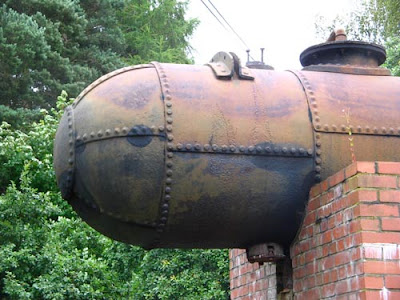 2. FACTORY FINISH
2. FACTORY FINISHIn both digital and painted renderings, surfaces usually come out looking pristine and new, so adding wear and tear takes deliberate effort. Leave some parts of it looking almost perfect, and then add dirt, dust, cracks, chips, creases and bent corners to the parts that get the most handling or exposure to the elements.
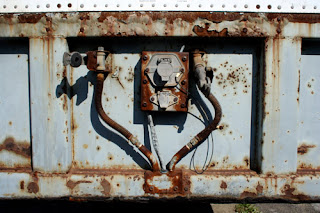
 3. CORROSION
3. CORROSIONMost metals except gold corrode when exposed to air or water. Corrosion is a chemical reaction where the metal combines with oxygen. Each kind of metal has a characteristic color. Iron corrodes to a red-orange, copper to a dark brown, bronze to a blue green, and aluminum to a white powder. Thin outer surfaces corrode first, especially if they’re exposed to salt. A colored stain often stains downward following the path of water runoff.
4. DENTS AND SCRATCHESThe dents and scratches in a vehicle tell the story of a series of misfortunes. Traffic impacts are often at bumper height; aircraft often get nicks on the leading edge of the fuselage and wings. Industrial designers usually plan for breakable forms like light covers and windows to be set back from the outermost edge of the form. This Cousteau submersible vehicle has a scratches, dents and paint chips missing from its many voyages.
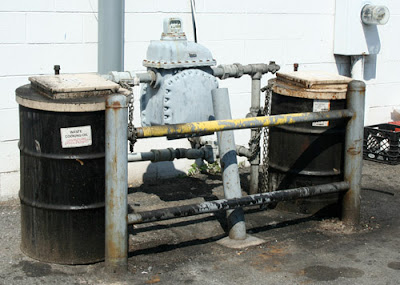 5. STREET TRAFFIC WEAR
5. STREET TRAFFIC WEARVehicles also wear down the surfaces they contact in very particular ways. Asphalt surfaces are prone to potholes and lateral cracks, as well as indentations under the wheels from the weight of heavy vehicles, especially at intersections. You can imply the passage of large vehicles by putting scrape marks under bridges or guard bars around delicate forms (such as those guarding the cooking oil barrels behind this fast food restaurant).
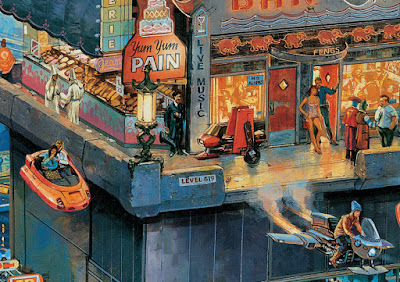 |
| Detail of Spaceport Bar by James Gurney from Imaginative Realism |
6. FLYING VEHICLE WEARAirport tarmacs have skid marks from tires on touchdown. Spacecraft would probably need some sort of launch apparatus, which would endure abuse from the propellants. Large spacecraft in docking bays might use some kind of flexible fenders like those that shield docks from ship impacts.
 7. PAINT CHIPS
7. PAINT CHIPSPaint doesn’t adhere well to sharp edges or corners, so it chips off there first. Nor does it hold on if water vapor gets trapped underneath, so it will often peel at the base of a wall near the ground. Paint will crack with a particular geometry, with the cracks usually meeting at right angles.

 8. CRACKS
8. CRACKSRigid materials bend a certain distance before they break. Brittle materials, like masonry or cement, will crack in lines perpendicular to the direction of expansion or bending. Pre-scoring sidewalks reduces cracking. Trees push up on paving surfaces around their root systems. This kind of cracking and heaving is accelerated in subfreezing weather. Window glass tends to crack in radiating lines from the point of impact.
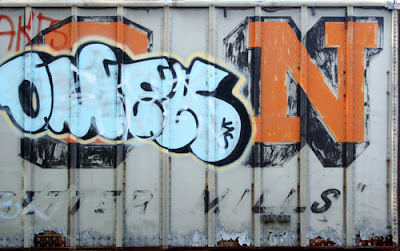 9. VANDALISM AND GRAFFITI
9. VANDALISM AND GRAFFITIPeople deface things for a variety of reasons. Pyromaniacs might burn a parked car or an abandoned building. Bored kids might break windows. Many regard graffiti as vandalism, but people often do it in the name of art. A lover might use graffiti as a declaration of love, or a gang member might use it as a proclamation of group identity. In a totalitarian society, protestors often deface the visage of a despotic dictator. Most graffiti has looping or curving shapes because it follows the radius of arm movements.
 10. DEBRIS
10. DEBRISSmall windblown street debris includes such things as paper wrappers, leaves, or cigarette butts. It collects in corners or against curbs wherever there’s no person or machine to actively clean it. Futuristic societies could have robot drones doing the job. Junk debris also collects wherever people leave it: on counters, in stairway landings, or on rooftops. In this scene of a rooftop workshop (above) there are tools and parts on the counter, a dented screen against the wall, and larger machine parts outside.
12. WORN COSTUMESOld clothing tells the story of the owner’s life. In the case of this asteroid miner, he has evidently worked for a variety of different corporations, including one called “Western,” and has toiled away for a time on Neptune. The American flag on his shoulder is tattered, and his jacket is as creased as his forehead.
 12. GRAPHICS
12. GRAPHICSLetterforms can be made from paint, stick-on vinyl, neon, or translucent plastic. You can contrast hand-lettering with machine lettering to suggest a society with an extreme class division. Consider what technology your society will use for changing information, such as announcing that a business is “Open” or “Closed.” You might show the system failing in some way, such as having some of the letters not lighting up.

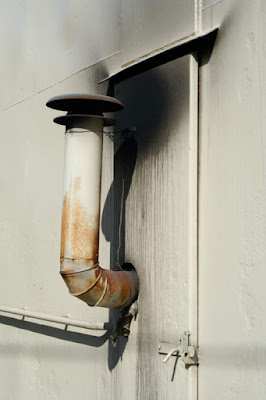 13. LEAKS AND STAINS
13. LEAKS AND STAINSCooking oil must be vented from a kitchen, and it invariably plasters the wall with a black stain that drips downward. All vehicles use lubricants which drip from the engine in places where the vehicle stays stationary or where it hits a bump in the road. Every vehicle needs access points for refueling or lubrication. Drips form below these points.
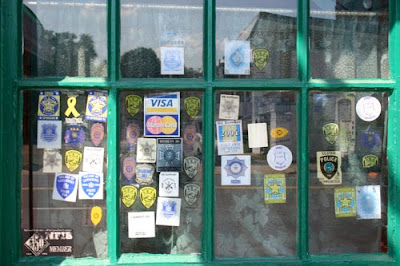 14. LABELS AND LICENSES
14. LABELS AND LICENSESIn young societies, there often isn’t much regulation of vehicle traffic or commercial activity. But as a society ages and gets more crowded, vehicle owners have to show that they’ve met legal requirements for registration and inspection. Vehicle labels include license plates, inspection stickers, theft warnings. Because alcohol and drugs are usually regulated, you often see a lot of stickers near the entrances of bars.
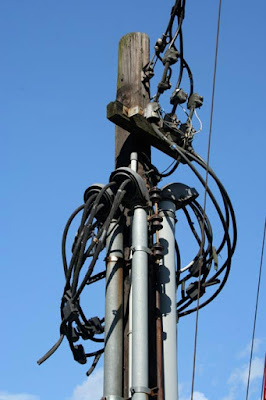
 15. CONDUIT CLUTTER
15. CONDUIT CLUTTERTo make a dwelling or vehicle receptive to wireless signals, it needs antennas or parabolic dishes. Anything that needs a direct flow of electrons, fluids or light pulses needs wires or pipes or fiber optic cables. In old stone structures, these are often run along the outer walls. Large scale cable corridors typically follow railroad right-of-ways. Obsolete cables, antennas, or satellite dishes are often not removed after they become obsolete.
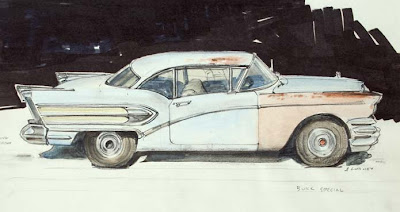
 16. IMPROVISED REPAIRS
16. IMPROVISED REPAIRSFixing something properly is expensive. If you can’t afford to repair that car window with factory parts, why not use a little duct tape and plastic sheeting? Junkyard parts generally don’t match, as seen in this sketch of an old Buick. In the photo of a car’s front end, the owner has held the parts together with rope. In our world, modernistic buildings are sometimes draped with tarpaulins to keep their roofs from leaking.
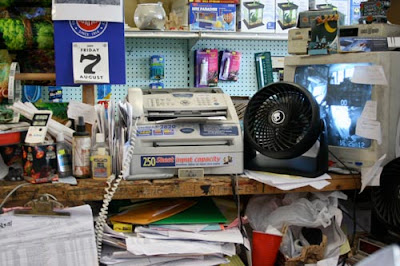 17. OLD PEOPLE, OLD TECH
17. OLD PEOPLE, OLD TECHOld people tend to be reluctant adopters of new technology, and they generally keep on using tech that served them when they were younger. In this photo of a pet shop counter, the fax machine and security camera monitor are at least 20 years old.
18. POST-FASCIST UTOPIASYour world doesn’t have to look decrepit or dystopian. You might show a city that had once been ruled by an authoritarian central government that is now in the hands of a vibrant local economy; think of Le Corbusier’s severe worker houses taken over by people who love flowers in window boxes.
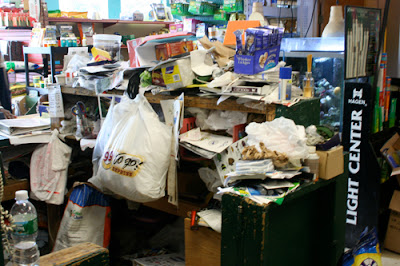 19. CUSTOMIZING
19. CUSTOMIZINGYou might want to show how individuals customize a standardized environment. In a high-tech corporate future, people might be issued a uniform work cubicle, vehicle, or housing unit. But people don’t leave it standard-issue for long. Cab drivers in Jordan hang religious images from the rear view mirrors. Animators festoon their computers with cool collectibles. A pack rat will transform any workspace with eccentrically organized clutter.
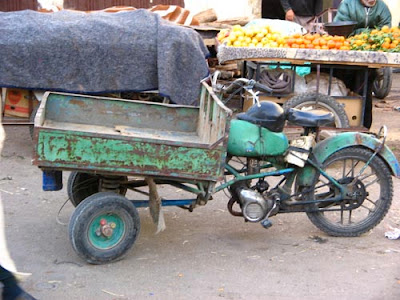 20. RECYCLED TECH
20. RECYCLED TECHWhat happens if a low-tech society inherits a world from a machine age? They might have no idea how the mechanical parts function, yet they would use whatever parts they find for other purposes. You might have a low-tech society reusing the parts of abandoned spacecraft for animal-drawn vehicles, or a robot made up of recycled parts
 21. RETROFITTING AND REPURPOSING
21. RETROFITTING AND REPURPOSINGA classic design strategy is retrofitting, modifying existing technology with updated elements, usually to adapt the system for modern uses. You are retrofitting if you stick an outboard motor on a rowboat, tape a GPS unit on your dashboard, or, in the case of this photo, use a steel ship cabin as a guardhouse near the entrance of a scrapyard.
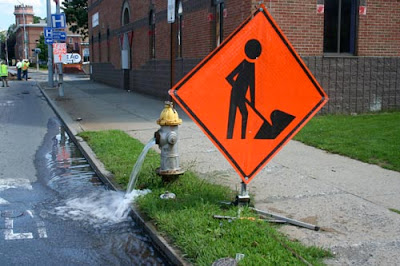 22. REPAIR AND CONSTRUCTION
22. REPAIR AND CONSTRUCTIONMany science fictions worlds in film and video games are shown being destroyed. But few are shown being fixed afterward. If there have been battles in your world’s past, surely there will be work crews fixing the damage. Apart from battle damage, there’s the normal decay and wear which requires constant maintenance. At actual construction sites, take note of the way pedestrian and vehicular traffic is rerouted around the construction.
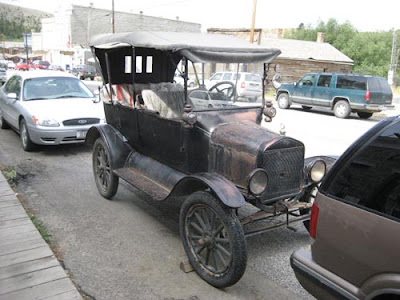 23. DECORATIVE HOLDOVERS
23. DECORATIVE HOLDOVERSRemember that for most of the history of design, people have used decorative elements to evoke a civilization’s past glories. This explains hood ornaments, ship figureheads, and the Venetian bucentaur. Functional elements often get absorbed into a design, where they serve a decorative function in the later stages of design evolution. Examples include running boards, which appeared on cars even when they were no longer useful.
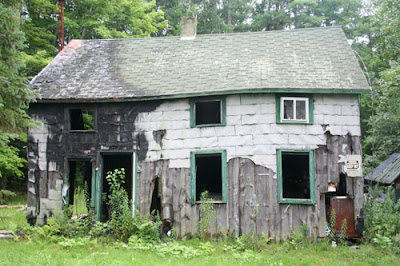
24. DISTORTED FORM Wood, like many other organic materials, tends to warp if it is exposed to heat or moisture. Plastics and metals bend or melt when they are heated or stressed. Even masonry goes out of alignment, especially if it is subjected to seismic stresses. These effects play out on older buildings, which rarely remain on plumb.
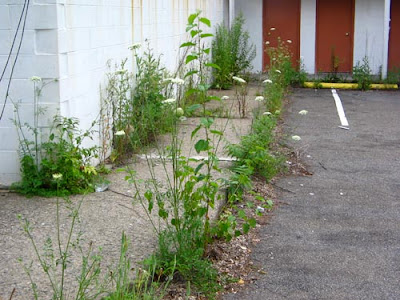 25. INVASIVE PLANTS
25. INVASIVE PLANTSIn any temperate or tropical climate, a structure that’s not actively maintained quickly gets overwhelmed by plants, but too often dystopian futures show a denuded planet. Invasive plants can get started in the smallest cracks near the ground or even high up on a structure. In the end, nature returns and swallows up the fleeting efforts of humankind.
-----
You can find some of my dystopian world-building in
Dinotopia: First Flight (signed copies on our web store, also available
from Amazon)
. For more tips on creating realistic imaginary worlds, check out my book,
Imaginative Realism: How to Paint What Doesn't Exist which you can also get
from Amazon.

Sontag was good at pretty much everything related to language — she wrote novels, stories, plays, and memoirs. But the best of her efforts were her essays and critical writings. It's difficult to narrow down a single collection to represent her nonfiction work, which ranged from horror movies to encapsulating "camp" to exploring illness as [...]

 Hello! It has been sooo very long since I have blogged on this blog. I am still reading and writing, but things have taken a bit of a different turn for me. It's so interesting to look back on this blog and see this progression of growing up...
Hello! It has been sooo very long since I have blogged on this blog. I am still reading and writing, but things have taken a bit of a different turn for me. It's so interesting to look back on this blog and see this progression of growing up...
Here's what's changed! :)
1. I have two little girls. I LOVE them. They are hilarious, cheeky, stubborn and the very sweetest.
2. I have 4 cats, and no other pets at the moment.
3. We've just sold our very first house and now are moving to the country! We're off to Wagga Wagga NSW and we are very excited.
4. I am going to write, again. I am hoping that this lifestyle change will enable me to have more time to write. Which is hard to manage as -
5. I am now a photographer. I specialise in babies and families. I enjoy it so very much. I've spent the past 3 years throwing myself into learning to be my best behind the camera, and also spending lots of time focusing on my family.
6. I am STILL obsessed with Autumn and everything fall related. In fact, I reference it in my business name. You can find my work
HERE.
7. I am happy. Life is good. It's been an up and down few years with post-natal depression and anxiety battles, but things are good. Friendships are good. The kids are great. We're doing well :)
8. We still travel back to America about once a year, and it's delightful to introduce our kids to new places and views.
So that's a bit of an update of what I've been up to! I would love to get reading and reviewing a bit more so I'll have some things to blog about! I did start blogging about education activities and kid-related stuff, which changed when the photography business got so busy.
Hopefully see you soon!
April
In his cinematography website, Evan E. Richards presents entire movies as a series of screenshots.
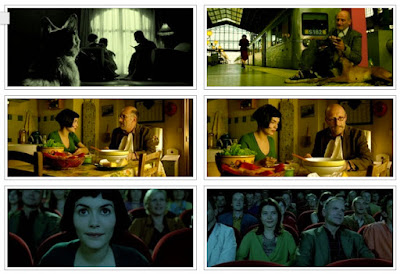 |
| Screenshots from Amelie |
Seeing a film broken down into as many as 400 individual frames makes this a helpful reference site for illustrators, storyboarders, concept artists, production designers, cinematographers, photographers, and art teachers. Above are a few
samples from Amelie.
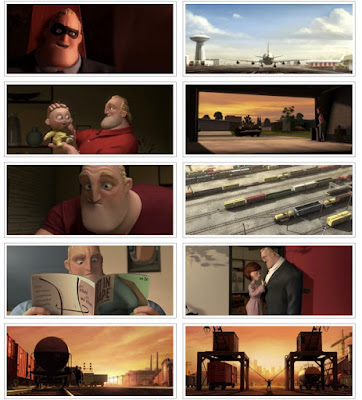
With animated films, like
The Incredibles, it's interesting to check the design language of the final frames against
the color script developed before production.
Seeing
screenshots of Hugo reminded me of a lighting continuity issue that was so distracting to me that it took me out of the film. When shooting the dialog coverage, director Martin Scorsese and cinematographer Robert Richardson reset the lights for all the closeups so that the actors were always backlit.
It makes for pretty lighting, but it's an impossibility. If one person is backlit, the person they're facing must be front-lit.
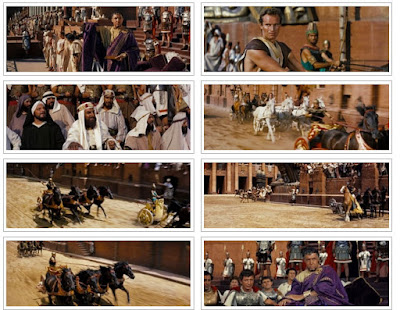 |
| Ben Hur (1959) |
There's a lot of inspirational reference for illustrators, such as 1959 epic
Ben Hur.
You can click on the individual frames to get a large blowup. In Ridley Scott's
Blade Runner, it's exciting to see how almost every shot is a revelation in set design and lighting.
-----Evan E. RichardsIndex of films on his site
Late in his life, academic painter and teacher
Jean-Léon Gérôme (1824-1904) wrote a statement of his beliefs about art.
"The fact is that truth is the one thing truly good and beautiful; and, to render it effectively, the surest means are those of mathematical accuracy. Nature alone is audacious above anything human; she alone is original and picturesque. It is, then, to her that we must become attached if we wish to interest and enthuse the spectator."
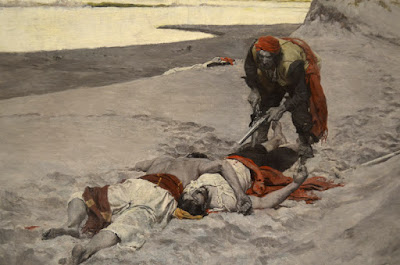 |
| Illustration by Howard Pyle |
"The art of illustration has made progress. It is more documentary, but none the less artistic. From this point of view the Americans excel. They have learned how to make use of the document and to make it serve their purpose. In this, instantaneous photography has been of inestimable assistance…. From all this one must conclude that our sense of sight is not as well developed as that of the Greeks or of the Japanese, and that it is not one of our gifts to observe with sufficient attention the various aspects of nature when in rapid motion."
"When one is young and inexperienced one prefers the art of sentiment, and has even the false idea that too much study, too much truth, take away from work its light and its movement. When one has grown old in the harness, when one has worked for many years, observed well, compared well, ideas change. The artist should be a poet in conception, a determined, honest, and sincere workman in the execution. One must put into his work an artistic probity, and, above all, work, work. But there can be no serious and durable work if it is not based upon reason and mathematical accuracy.—if, in a word, art is not allied to science."

This breathtaking memoir, marrying Sally Mann's powerful photography with a personal story so captivating that it rivals great works of fiction, reveals how one's art can become thoroughly intertwined with one's life. Read this book: it's a truly powerful work of art in its own right. Books mentioned in this post Hold Still: A Memoir [...]

By: Rhianna Walton,
on 3/6/2015
Blog:
PowellsBooks.BLOG
(
Login to Add to MyJacketFlap)
JacketFlap tags:
Biography,
Politics,
Photography,
Travel Writing,
World History,
Latin America,
Julia Cooke,
Ernesto Che Guevara,
Beyond the Headlines,
Alina Garcia La Puerta,
Jon Lee Anderson,
Julia E Sweig,
Marc Frank,
Ramiro Fernandez,
Add a tag
Ever since President Obama's December announcement that the United States is resuming full diplomatic ties with Cuba, the Powell's buyers' office has been suffering from an epidemic of reverse island fever. It turns out that almost all of us harbor a secret desire to visit Cuba. Some of us want to eat lobster, swim in [...]
I'm making animated GIFs of all my novelty books.
Please send help, or cookies, or say well done or something.
If you think that having books published means that people do all your promo for you, boo you are wrong. Almost all of us need to sort out our own author pictures, websites, reading tours and whatnot.
In good news, the basement now has a light tent.
MORE SOON.
 |
| The Movie Poster |
And then there's my Hollywood movie poster photo - of course. I first must explain I've never set foot in Hollywood. But maybe because of that I always think that adding 'Hollywood' to anything is bound to add panache... as in:
Hollywood hills
Hollywood sunset
Hollywood ending
Hollywood limo
Hollywood mansion... you get the idea.
 |
| The original photo |
People no doubt thought I was bluffing when I said I'd been on a 'Hollywood photo shoot' one rainy night last December. But I really was - in the dark - on my bicycle - with my camera and tripod.
The documentary film project required a dark, gothic, edgy image. So I was out to make just such an image with my trusty Lumix.
 |
| The contact sheet |
In the falling dark the rain had just stopped. It was time for my Hollywood moment. Fate had compelled me... my date with Hollywood.
It all happened when the stars aligned and by a happy twist of fate I was contacted by the art director in L.A., the amazing Dagmar Wilde, who has created dozens of award winning Hollywood movie posters. (I know it doesn't sound like I fit into this world, does it? Believe me, I don't. So I was just as astonished. But it was so much fun).
Dagmar has designed movie posters for DeNiro, Ben Stiller, Robert Altman, Mad Men, Gossip Girl along with a stunning collection of independent film projects. And she's also a playwright and writer - all leading to the 'amazing' moniker. And for full disclosure, I am honored to say that she's a friend of mine from online and life.
The film is 'The Hunting Ground' directed by Oscar nominated Kirby Dick and Amy Ziering. They've done films like The Invisible War, Outrage, This Film Is Not Yet Rated and Twist of Fate. This film is a documentary on the topic of college rape. Not a topic I knew anything about... but I guess that's the whole point of the film - to shed some light on this overlooked issue.
Since it was temporarily not raining, I shot a sequence of images, trying with intuition to make something compelling. Of course a tripod and correct exposure are requirements for night photography. It's way trickier than daylight shooting... factors like noise and blur and losing details all figure in. It can be difficult. I used a timed shutter release rather than manual, so as not to blur the image. And the mighty Lumix fz200 did it's job.
I finished snapping and biked home in the dark. Was that really all there is to a Hollywood photo shoot? I suppose so. And in short order Dagmar did the rest with her design magic, turning my photo into a real Hollywood poster. Figures were added, figures erased, branches removed, banners hung... all kinds of changes. Employing her design wizardry, Dag transformed the original to something quite different.
The final poster artfully captures a sense of edgy, dark, spooky gothic college setting, exactly filling the parameters of the poster project. So now this film is on it's way to festivals and venues everywhere... how exciting!
 |
| The Sundance photo |
I was clicking around on the Sundance site and was delighted to see another photo of mine.... rubbing shoulders with the Stars! Such a thrill! Well that was my Hollywood moment! Sigh...
I wonder if I will ever really make it to Hollywood? Of course there was no cast party except in my imagination. Oh well, illustrators never get parties either.
By:
Donna Earnhardt,
on 1/4/2015
Blog:
WORDS
(
Login to Add to MyJacketFlap)
JacketFlap tags:
loving life,
january resolutions,
life in the fast,
living up to our expectations,
author,
life,
poetry,
school,
writing,
photography,
superhero,
working,
homeschool,
writing for children,
creation,
creating,
january,
fresh,
clean,
Add a tag
It’s strange. From October to December, there seems to be very little time to do much other than marvel at how fast time flies. I do as much as I can to get done what needs to be done. I love that time of year, even the hustle and bustle of it all. But from…
the museum of americana is happy to announce that we are open to submissions for our Spring issue, which will be a special music-themed issue, from now until January 15th, 2015.
We seek writers who explore and/or repurposes the cultural history of America’s music, especially jazz, country, blues, and rock n’ roll, into fiction, nonfiction, poetry, art, photography, and of course songs. For general guidelines, visit our Submissions page.
 |
| Richard Estes, "Murano Glass," 1976, 24 x 36 inches, oil |
Calling him a photorealist is a little misleading. Although he uses photos as a source for his work, many of his paintings combine information from several different photos, and he doesn't paint over traced photographic projections. In the case of "Murano Glass," above, the reflection that you see in the window isn't actually visible in that particular store window. He had to construct the scene.
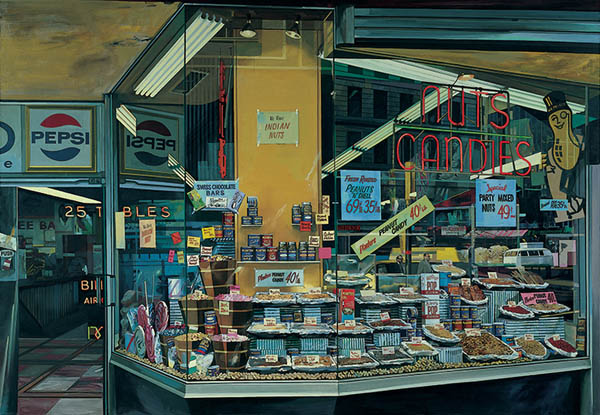 |
| Richard Estes, "The Candy Store," 1969, 47 x 68 inches |
Painting a reflection in a shop window presents a fascinating visual challenge. Usually the street reflection is most visible in the dark areas of the window. Wherever the reflection crosses an object seen through the window, the colors and values are added to each other, such as in the slanting yellow sign.
Estes delights in creating a puzzle out of all the overlapping layers of information. In the painting above, the interior ceiling forms slant across reflections of buildings in the upper right. Some signs, such as "Burger" are reflected twice by parallel planes of glass or mirrors.
Painting reflections + transparency from observation rather than from photos is a much greater challenge because one has to overcome the effects of stereoscopic vision and focal depth. Whereas a camera will compress reflections and transparencies into a single plane, our eyes and brains separate them, so that it's almost impossible to perceive the combined effects of transparency and reflection at the same time.
-----

What's John been doing? A lot!
If you said John has been shooting photos for a Hollywood movie poster, signing a new book contract, drawing pictures for a magazine spread, getting to know a new children's book agent and shoveling snow... you'd only be wrong about the snow. I over-exaggerated about the snow. Whew!
The photo is from last night's photo shoot. I didn't realize one could actually have a Hollywood photo shoot from a bicycle with a basket in the dark, but I guess you can. I wore my beret instead of my helmet since I'm an artist.
I quite enjoy the panache of dropping the name 'Hollywood' into a sentence.... it adds glamour. Pinch me... did that all really happen?
Off the Coast is accepting submissions for the Winter 2015 issue.
Deadline: December 15, 2014
Send us your poetry, artwork & photos and poetry books for review via Submittable.
Editorial decisions are not made until after the December 15 deadline. Notifications will go out early to mid-January. Contributors receive one free copy. Additional copies of the issue their work appears in available for half the cover price.
Poetry:
Send 1-3 previously unpublished poems, any subject or style, using our submission manager.
Postal submissions with SASE with sufficient postage for return.
Please include contact information and brief bio with submission.
We accept simultaneous submissions, but please inform us immediately if your work is accepted elsewhere.
Photos & Artwork:
We accept B&W graphics and photos to grace the pages of Off the Coast, and color or B&W for the cover.
Send 3-6 images in tiff, png or jpg format with 300 ppi minimum resolution. Images in portrait orientation work best for the journal.
Please use submission manager to send artwork.
Reviews: For reviews, send a single copy of a newly published poetry book. Please send bound books only, we do not review chapbooks.
Mail to:
Off the Coast
PO Box 14
Robbinston, ME 04671
In the 1970's he was taking pictures of things that no one else was. He took a trip across country with the goal of documenting everything: including every meal he ate and every toilet he used.
A formative influence was hanging out at Andy Warhol's Factory. By age 23 he had a show at the Metropolitan Museum.
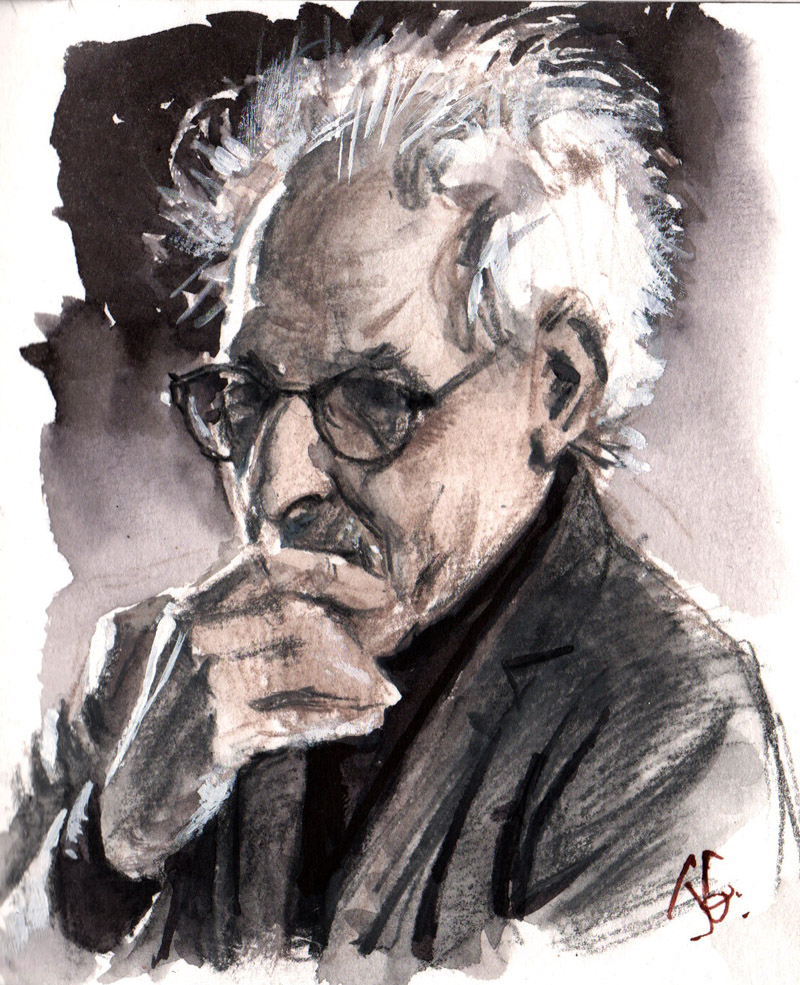 |
| Portrait of Stephen Shore, photographer, drawn from life by James Gurney |
Last night Stephen Shore gave a slide show of his work in Rhinebeck, New York, and I drew his portrait as he spoke. He briefly struck a pose with a hand to his mouth, both pensive and guarded. The lecture gig had somehow slipped his mind, and he drifted in a half hour late after a few nervous phone calls from the bookstore owners.
His wild nimbus of white hair was rim-lit from the fluorescents of the bookstore. The projection screen lit him with soft light from the other side. I chose to portray him in grays, anticipating that he might talk about color vs. black and white.
He said:
"When I started this work, no art photography was in color. Paul Strand told me, 'Higher emotions couldn't be communicated in color.' Mind boggling! What would Kandinsky think of that? I see the world in color. It's what it's like to see. Color gives cultural information. By 1990 almost all art photography was in color. Then in contrariness I started working in black and white."
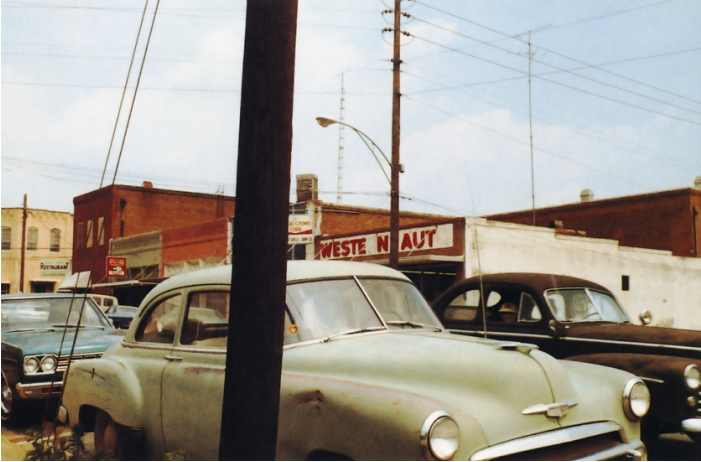 |
Stephen Shore, Columbia South Carolina June 1972 |
Shore said, "I was interested in the immediacy that some snapshots have. I wanted to use repeated motifs, to capture some aspects of our culture. I was taking what we would now call screenshots of our field of vision."


Title: Sphere 360º
Platform: iOS, with some limitations
Cost: Free
Sphere 360º bills itself as "the future of photography." It adds a three dimensional aspects to your panoramic shots, with sometimes startling results. Be it a Siberian forest or an Italian coastline, there's a definite concrete virtual reality aspect to viewing a "sphere."
The gallery of shared spheres is pretty intimidating. Many are taken with a rotating gadget called a Motrr, which can be controlled wirelessly. There is an "easy" mode, but there is a definite art to creating a sphere. Additionally, you must be connected to a network, which could make capturing nature scenes difficult
To begin your sphere, you can scan a panorama or upload one saved to your camera roll. To complete the sphere, you use your finger to create details and depth, essentially zooming in and moving around to flesh out the experience of being there.
If that's not enough to get your teens interested, Kendall Jenner recently recommended it her recent Vogue interview with an enthusiastic "Download immediately."
Even is you never create a sphere, the curated collections with their intuitive and smooth navigation could be a boon for teachers and librarians looking to take student beyond the herky-jerky vagueness of Google Earth. And it's too kinesthetic to it justice outside the app.
The current version doesn't seem to be supported on the latest Apple hardware, so it's the rare case where something interesting isn't available on the newest devices.
Creator Spherical also has a 4D video app called Play, which is also free for a limited time.
If you have a suggestion for an App of the Week, let us know, and be sure to check out more great Apps of the Week in our archive.

When
Harry Anderson (1906-1996) set out to illustrate images from his 7th Day Adventist religious faith, he turned to photo reference to give him added realism.
Here are the photos next to the finished paintings. It's interesting to compare the changes he made as he went from the reference to the painting.
Here, Jesus is lowered from heaven to outreached human hands. The painting invents the sweep of the garment, and the warm reflected light from the back of the figure to the encircling white fabric.
This is one of Anderson's most famous religious paintings. Much of the spontaneous action and accurate eyelines came from posing the whole grouping together and actually having them walk.
Norman Rockwell didn't shoot reference this way, and would instead generally pose models separately and would
set up walking poses somewhat artificially.
The potential pitfall of shooting photo reference, especially for religious paintings, is that one can get caught up in the commonplace and random details of the photo and lose sight of the mental image of the scene.
Anderson certainly didn't copy the reference, instead redrawing it, and controlling the values. Note how he downplayed the reflected light on the shadow side of the chest.
Like many other illustrators of his day, Anderson used black and white photos, not wanting to be influenced by the colors. He spared no expense or effort to get good scrap. According to his
biography, a large percentage of his commission went to model expenses and photography fees.
Most of the photos he used he took and developed himself in a bedroom that he converted into a photo studio and darkroom. He used professional models—who even 50 years ago charged as much as sixty dollars an hour—but he also used neighbors and friends.
The biography says: "By posing his models in approximately the right costume and photographing them, Harry could obtain what he needed—the proper foreshortening of limbs, inclination of head, relationship of light and shadow."
Additional resources:
Previous posts:

View Next 25 Posts
 When I was in college I temporarily rejected my natural inclinations to be a librarian (an occupation I dismissed as boring and nightmarishly appealing) and decided I would become a photographer. So got a B.A. with a concentration in Fine Arts – Photography. And what I learned from my stint as an architectural/portrait/sports photographer was simple: I’m awful that job. Shutter speeds are not my friends and f-stops cause me to break out in hives. So I caved and became a librarian after all, but I never stopped yearning for photography. Maybe that’s why I’m such an advocate for it in children’s books. In 2014 at NYPL I held a Children’s Literary Salon with panelists Nina Crews, Joanne Dugan, Charles R. Smith, and Susan Kuklin to discuss the state of photography in books for kids. It was brilliant, though I was left wondering why, in an age where creating photographic books for kids is cheaper than ever, the pickings are so very slim.
When I was in college I temporarily rejected my natural inclinations to be a librarian (an occupation I dismissed as boring and nightmarishly appealing) and decided I would become a photographer. So got a B.A. with a concentration in Fine Arts – Photography. And what I learned from my stint as an architectural/portrait/sports photographer was simple: I’m awful that job. Shutter speeds are not my friends and f-stops cause me to break out in hives. So I caved and became a librarian after all, but I never stopped yearning for photography. Maybe that’s why I’m such an advocate for it in children’s books. In 2014 at NYPL I held a Children’s Literary Salon with panelists Nina Crews, Joanne Dugan, Charles R. Smith, and Susan Kuklin to discuss the state of photography in books for kids. It was brilliant, though I was left wondering why, in an age where creating photographic books for kids is cheaper than ever, the pickings are so very slim.  Initially when I thought of this list I figured I’d only include picture books that incorporate photography. That idea sort of fell by the wayside when I realized that there just weren’t enough of them published in a given year. As a result, I’m including those nonfiction titles where a single credited photographer (in this case the incredibly patient and talented Andy Comings) has done the work. Crow Smarts also happened to be one of my favorite nonfiction titles in 2016. It’s not a picture book but rather a long and remarkable look at what may well be the most fascinating, intelligent birds on the planet.
Initially when I thought of this list I figured I’d only include picture books that incorporate photography. That idea sort of fell by the wayside when I realized that there just weren’t enough of them published in a given year. As a result, I’m including those nonfiction titles where a single credited photographer (in this case the incredibly patient and talented Andy Comings) has done the work. Crow Smarts also happened to be one of my favorite nonfiction titles in 2016. It’s not a picture book but rather a long and remarkable look at what may well be the most fascinating, intelligent birds on the planet.
























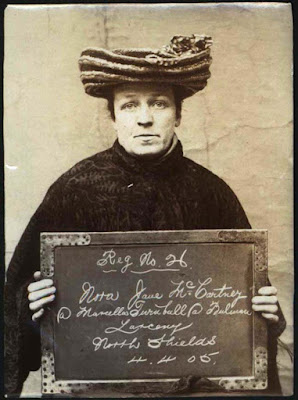

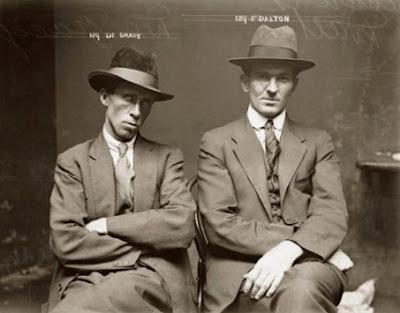
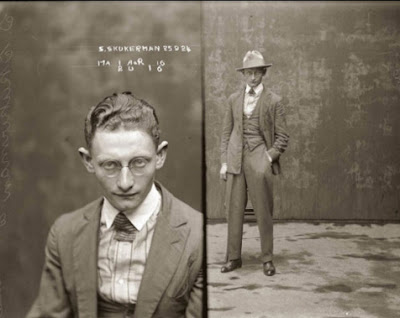
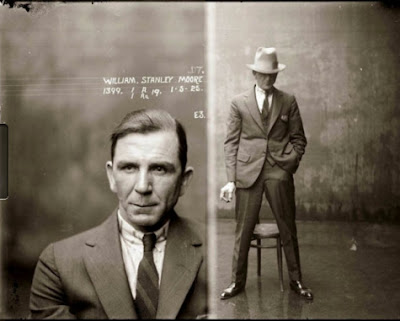

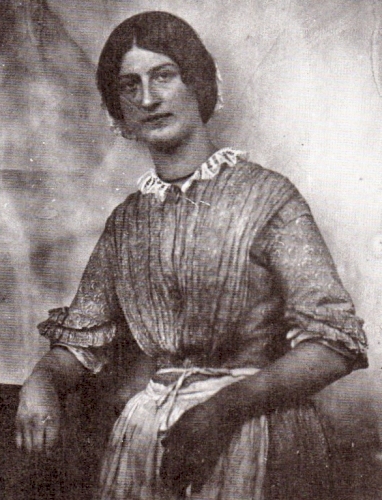
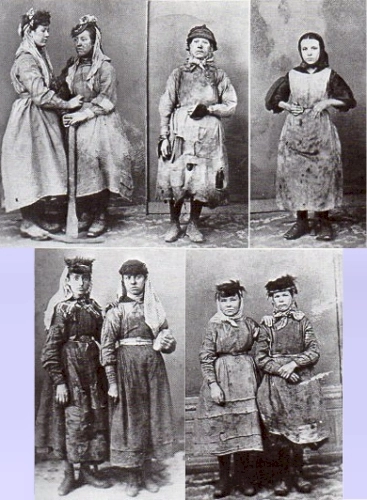



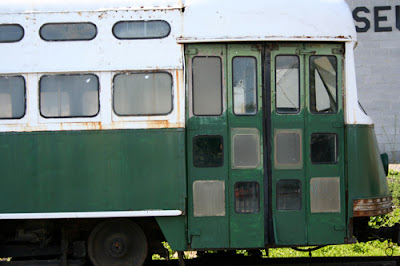



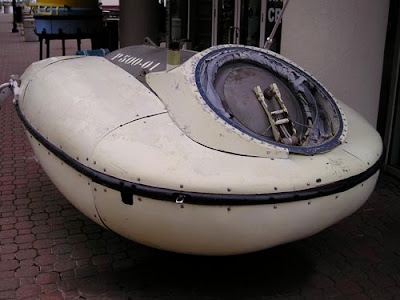


































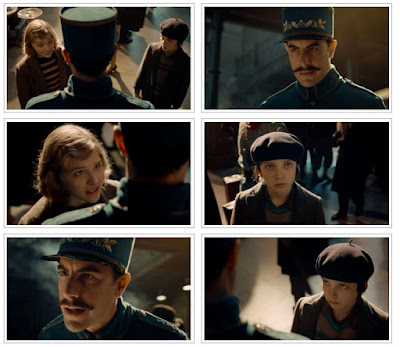
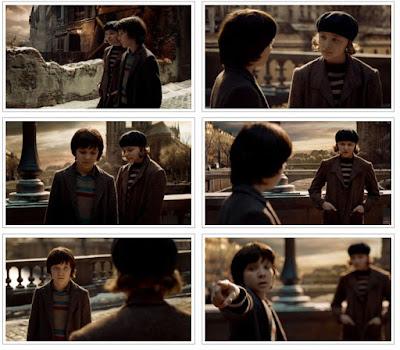

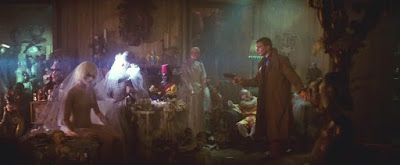
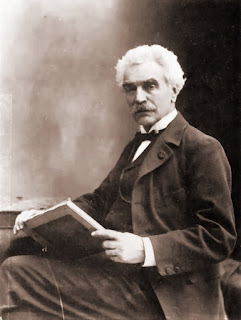

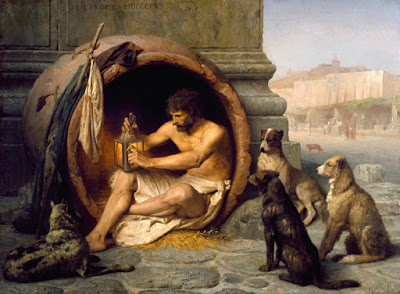








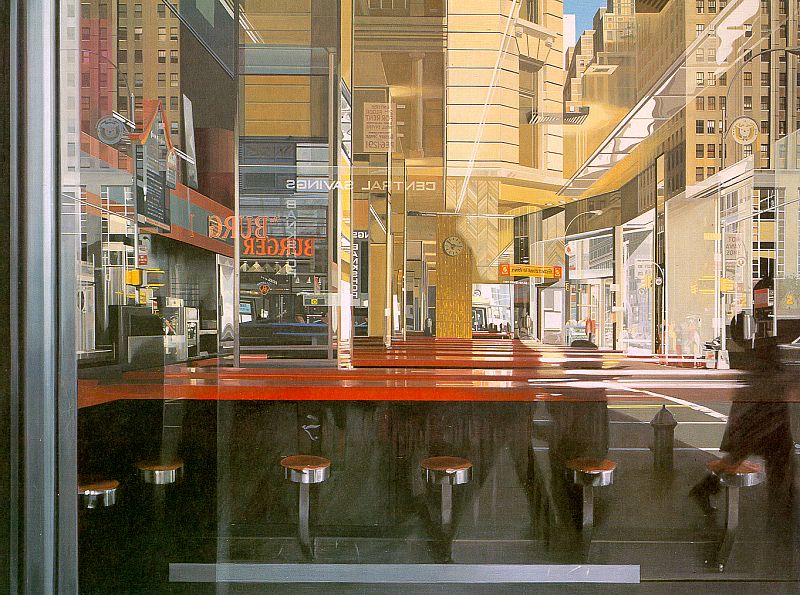




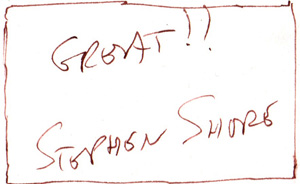


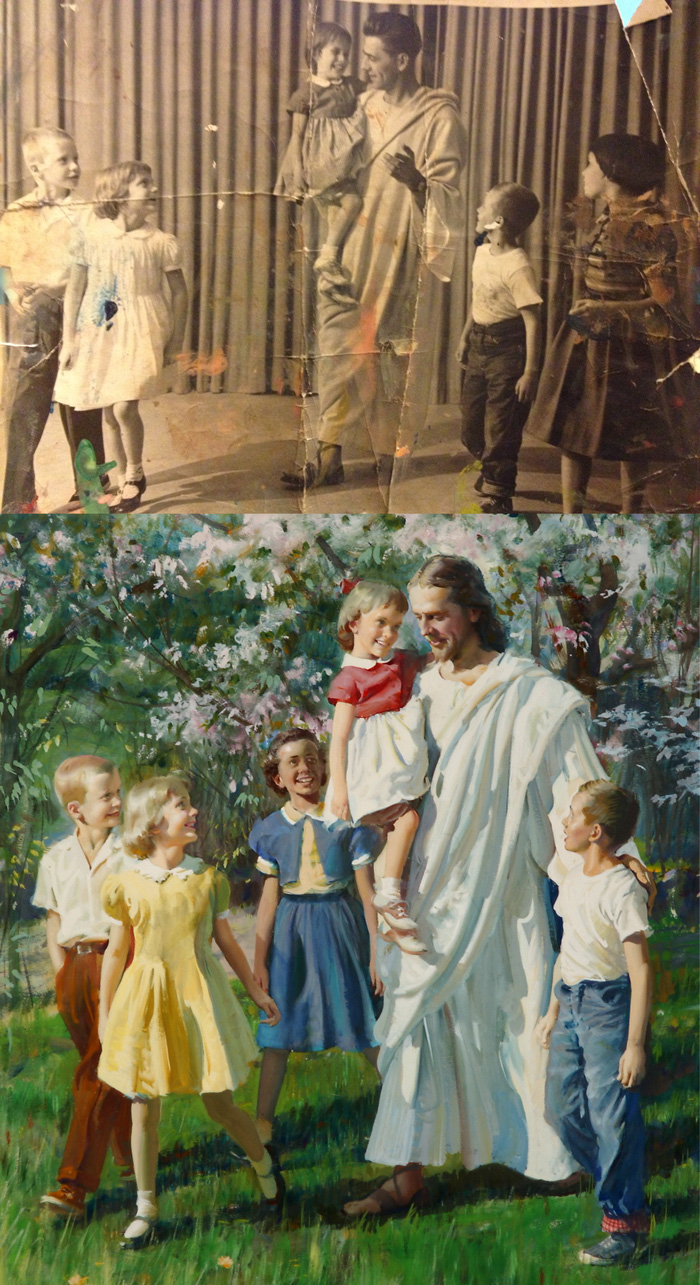
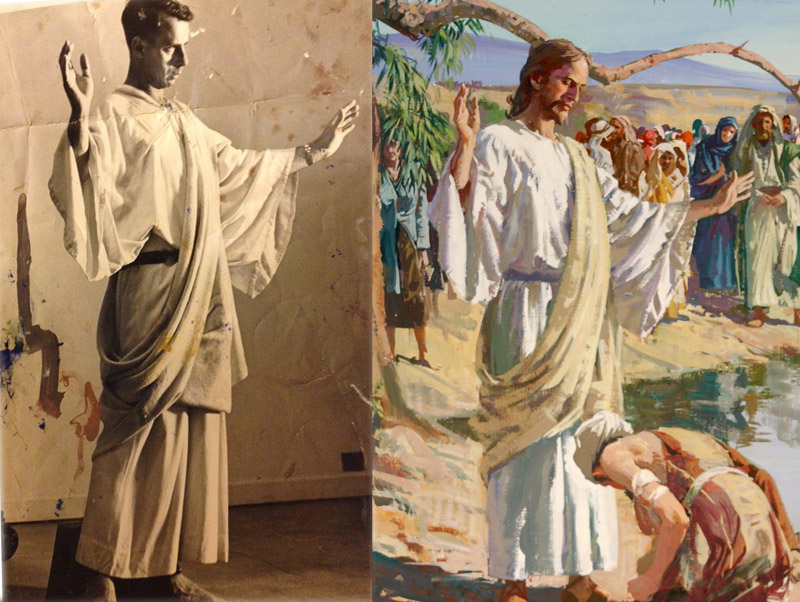
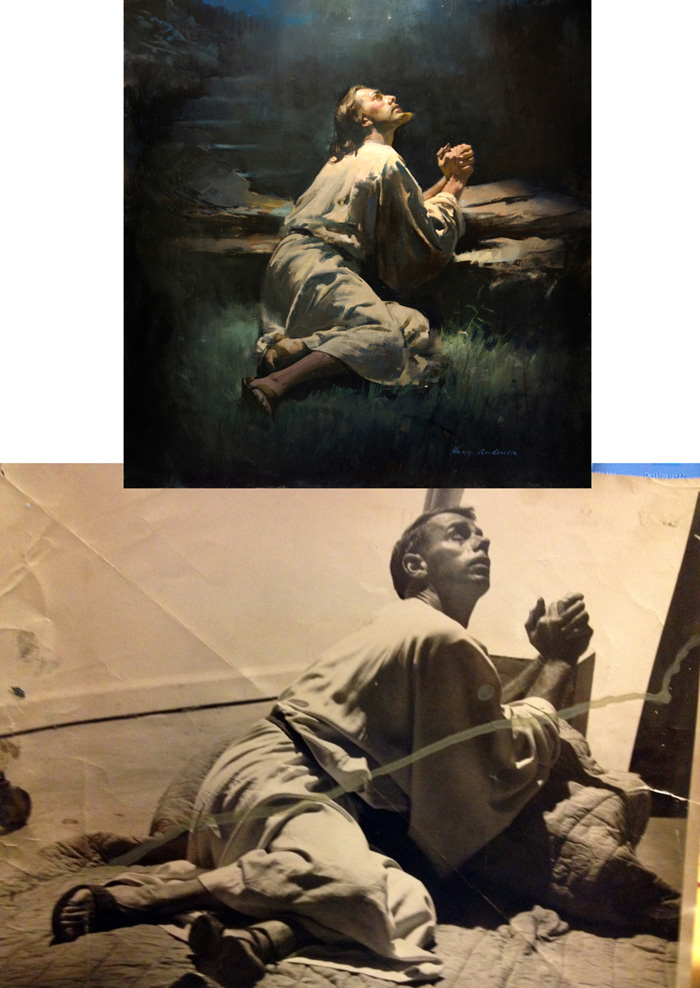
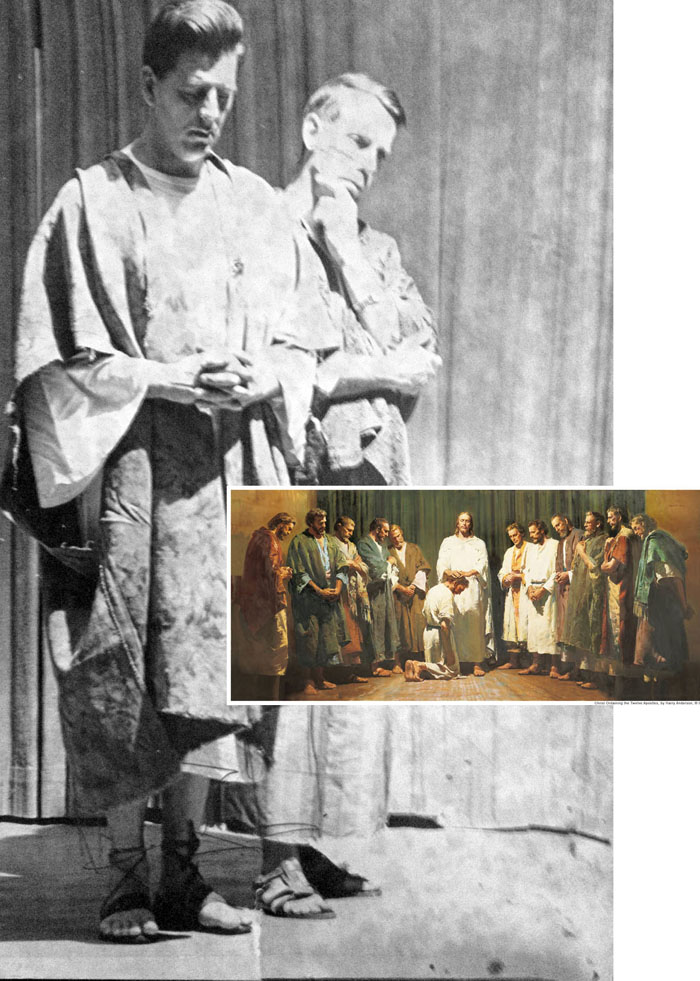
I suspect the foot book you’re thinking of is the delightful Best Foot Forward: Exploring Feet, Flippers, and Claws by Ingo Arndt.
Awww, pfui. So I am. I’m going to change the text (thereby making this comment thread mildly confusing, but them’s the breaks). Thanks for the correction!
I’m impressed with your use of the word “punim.” I think you should hide a Yiddish word somewhere in every post.
Such a great selection! I love April Pulley Sayre’s work, and her photos for Best in Snow (& Raindrops Roll) are just stunning and fully of such lovely, intricate detail.
Crow Smarts was fabulous, and I loved the photos of all of the elephants in the Natumi story too!
I somehow missed Whose Eye Am Eye–very intriguing and will have to check that one out.
I also love Rick Lieder’s photos for his collaboration with Helen Frost (Among a Thousand Fireflies, Step Gently Out, & most of all, Sweep Up the Sun).
I meant Whose Eye am I!! 😉
Yeah, I was sad there wasn’t a Frost/Lieder book out this year to add to the list. Maybe in 2017?